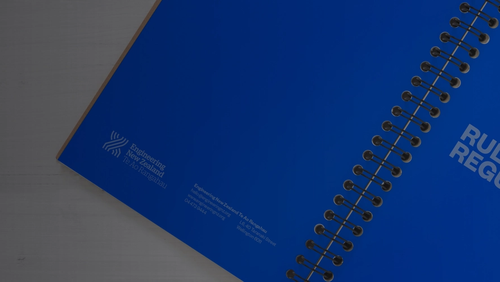10 Jun 2025
New Zealand’s resource management system is overdue for a major overhaul. It can be complex, slow, and expensive – especially when you’re trying to deliver critical infrastructure. The Government has committed to a large overhaul of the RMA. So, what does this mean for engineers – and how can you help shape it?
What does RMA reform mean for engineers?
If you’ve faced delays waiting for a resource consent or grappled with inconsistent planning rules across regions, you’ll know how much the current system can slow down delivery. For engineers, RMA reform could bring many opportunities to improve your projects but also potential risk.
The Government’s proposed changes are intended to simplify the system and make national direction more consistent – especially around infrastructure. This includes clearer policies on what infrastructure is, what outcomes it should deliver, and how its environmental effects are managed.
That could mean:
- Faster, more predictable consenting pathways
- Consistent national standards for infrastructure design and delivery
- Less duplication and fewer roadblocks across councils
- Smarter, integrated spatial planning
RMA reform that is done well and reflects the experience and knowledge of technical experts has the potential to reduce project risk, streamline timelines, and improve how we balance development with environmental protection. Engineers have a critical role to play in making sure the new system is technically sound, practical on the ground, and ready for future demands.
This is your opportunity to shape the rules that shape the built environment and preserve our natural one.
What’s changing?
The Government plans to replace the RMA with two new laws:
- The Planning Act – focused on land use, development, and infrastructure.
- The Natural Environment Act – focused on protecting air, water, soil, and biodiversity.
These changes aim to streamline the system, reduce red tape, and prioritise clear outcomes. For engineers, that could mean faster consenting, lower compliance costs, and a more consistent national framework for infrastructure delivery. You can access a summary of the key legislative proposals here.
Right now, the Government is consulting on a new approach to national direction – the rules and policies that guide resource management decisions at local and regional levels. The current system is a tangle of documents that often contradict one another. The proposed reform is set to bring order and clarity.
The proposals are grouped into four key packages:
- Infrastructure and Development – introduces four new and amends four existing national direction tools to make it easier to plan and build infrastructure.
- Primary Sector – updates to support growth in farming, forestry, and other primary industries.
- Freshwater – revisits how freshwater is managed to better reflect the needs of all users.
- Going for Housing Growth – due shortly, this will address land availability and planning barriers for housing.
You can find more about the consultation and read the details of each package here.
Eventually, each new Act will be supported by a single, streamlined national policy direction – providing clear, consistent expectations nationwide, including for infrastructure and urban development.
What’s next and how you can help
Consultation on the national direction proposals is open until 27 July. Engineering New Zealand will be submitting a response. We support efforts to enable development – especially future-focused infrastructure – while also ensuring our natural environment is protected.
Want to shape the future of resource management in Aotearoa?
Email us at advocacy@engineeringnz.org by 30 June to be involved in the submission.
The two new bills are expected to hit Parliament in late 2025, and we’ll submit on those too. Let us know if you’d like to be part of that process later in the year.







